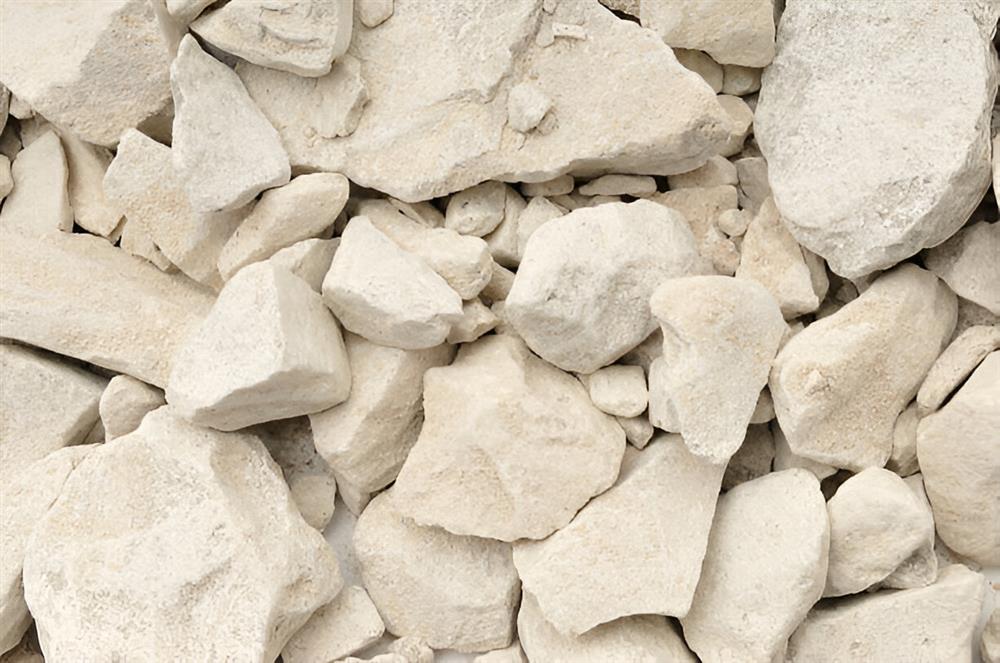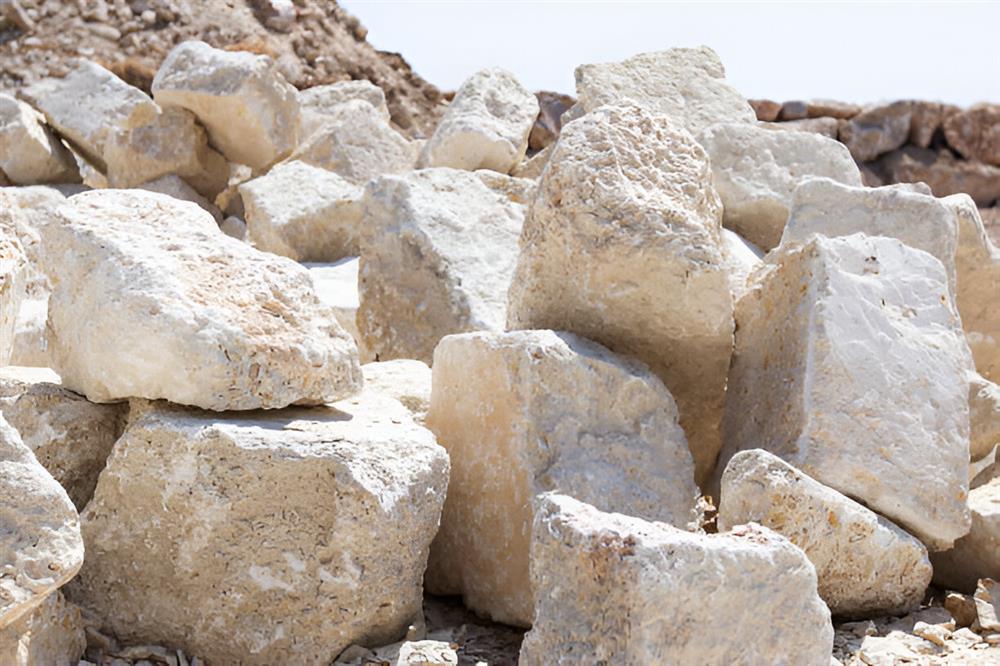Turkish Limestone: All Details!
18.07.2024
Turkish Limestone is one of the marble varieties. Limestone is a valuable stone used in many areas.
Turkish Limestone, one of the marble types, is extracted from the richest mines. This type of stone is frequently preferred as cladding on the exteriors of homes and workplaces.
We have explained in detail the information about Turkish Limestone, which is preferred for use in many areas, in the subheadings below. Enjoy reading!
What Does Turkish Limestone Mean?
 We often encounter the question of what limestone means; let's answer this question. Limestone is one of the marble types, which is a natural stone type. This stone type is also known as limra stone.
We often encounter the question of what limestone means; let's answer this question. Limestone is one of the marble types, which is a natural stone type. This stone type is also known as limra stone.
Limestone is a type of rock formed from mixtures of magnesium carbonate, calcium carbonate, coral, and skeletons of marine creatures.
Limestone marble type has a softer and more easily workable structure compared to granite and normal marble. Because this stone has an easily workable structure, it can be easily processed into different sized shapes. This characteristic makes limra stone preferred in many areas.
What is Limestone Marble and Where is it Used?
People often wonder what Turkish Limestone marble is and where it is used, as it is one of the marble varieties. Limestone, which is a natural stone type, is one of the marble types.
It is frequently preferred because it is a softer and more easily workable marble type in terms of its structure. This marble type is extracted from the richest mines in Turkey.
Advantages of Turkish Limestone
Limestone provides more advantages compared to other stone types. This stone type is soft in terms of its structure and lighter compared to other stones. Limra stone is frequently preferred in architecture as it is used for decorative purposes in terms of aesthetics.
Limestone is also more economical than other natural stones. This stone type also comes in various colors, which provide a visually aesthetic appearance to the environment.
This stone type can be used in many areas not only in the marble field but also in its first form. So, in which areas is it preferred? Let's list them in items.
Areas Where Turkish Limestone is Preferred
- As flooring or wall cladding on the exteriors of houses
- As wall cladding on the exteriors of workplaces
- In interior and exterior architecture
- In floor coverings
- On countertops
- In furniture
- In home decoration ornaments
- In cement production
- In lime production
- In the purification area for flue gas
- In the agricultural sector
- As filling material in the construction sector
- Glass, paper industry
- Rubber, paint industry
Turkish Limestone is used in many areas in terms of its structure and features. It is a preferred product due to its color variety, lightness, soft structure, and aesthetic appearance.
Where is Limestone Extracted?
 Turkish Limestone is a frequently preferred stone type. This stone, which is used for many purposes, is in high demand both domestically and abroad. This stone type, which is softer and more easily workable compared to other natural stones, is a product that people prefer in their homes with its color and aesthetic appearance.
Turkish Limestone is a frequently preferred stone type. This stone, which is used for many purposes, is in high demand both domestically and abroad. This stone type, which is softer and more easily workable compared to other natural stones, is a product that people prefer in their homes with its color and aesthetic appearance.
The question of where limestone is extracted is one that people often wonder about. This marble stone type is extracted from its factory in Afyon, which is one of the places where rich mines are located.
Limestone is also obtained from quarries in Finike and its surroundings, known to be in the southern region of Turkey's Mediterranean coast. This type of mine, which is very rich in our country, is also extracted in Antalya Beydağları, Finike basin, and Yozgat Yerköy.
Turkish limestone is a natural stone type that is in demand in many places. This stone, which has a soft texture, is frequently preferred in spaces for decoration.
What Color Varieties Does Turkish Limestone Have?
Turkish Limestone is one of the natural stone types. So what color varieties does it have?
The main color of limestone is pure limra. The stone known as pure limra has a sandy white color. However, minerals with different colors can change the color of limra stone. Some minerals can also be composed of substances such as clay, sand, iron oxide.
The color of a limra rock containing iron oxide can be brown, red or yellow. If limra rocks contain carbon minerals, they can be blue, black or gray.
White Limra Color
White limra color is also known as pure limra. This stone type, which has a homogeneous structure, is preferred as a cladding material on exterior surfaces. Along with this color, sesame, wavy and white limra are more preferred. It has both a homogeneous structure and offers a cleaner appearance.
It is used in decorations in workplaces and homes to achieve an aesthetic appearance.
What are Limra Surface Treatments?
 Limra stone is a type of natural stone used in many areas. This stone type also has different surface treatment types according to its usage areas. Let's explain what limra surface treatments are in items.
Limra stone is a type of natural stone used in many areas. This stone type also has different surface treatment types according to its usage areas. Let's explain what limra surface treatments are in items.
Here are Limra Surface Treatments
- Sandblasting Process
- Polishing Process
- Hammering Process
- Raw Cutting Process
- Burning Process
- Aging Process
- Acid Washing Process
- Honing Process
Let's explain the titles of Limra surface treatments in more detail.
Sandblasting Process
A scratched surface is created on limra plates and tiles using a sandblasting machine. The degree of the scratched surface is determined according to the ratio of sandblasting to be applied.
Polishing Process
This type of process is applied to hard limras. It is used to make a shiny surface on the stone.
Hammering Process
It is a mechanical surface treatment done with a specially made hammer.
Raw Cutting Process
This type of process involves leaving marks such as blade marks that occur during limra plate or block cutting without any processing.
Burning Process
This process is not applied to every limra stone. If the limra stone consists of minerals with different expansion rates, the burning process is applied. When high heat is applied to the limra stone containing minerals of this type, they expand and separate from the surface part of the stone. However, care should be taken with the burning time in this burning process.
Aging Process
This process is applied for people who want to achieve an old appearance. Limra tiles are placed in the mixing barrel with small stones, water and large aggregate. These materials give the limra tile an old appearance.
Acid Washing Process
To achieve an antique appearance, a diluted acid solution is applied to the surface of limra. When doing this process, it is important to adjust the ratio of the acid solution and the waiting time on the limra.
Honing Process
It is a process for people who want a matte appearance on limra tiles. It is the most preferred process in limra surface treatment.
Turkish Limestone is a stone type with many usage areas. It also has many different surface treatments. It is a natural stone type with beauty that you can prefer both in the interior and exterior architecture of your home and in your workplaces.
